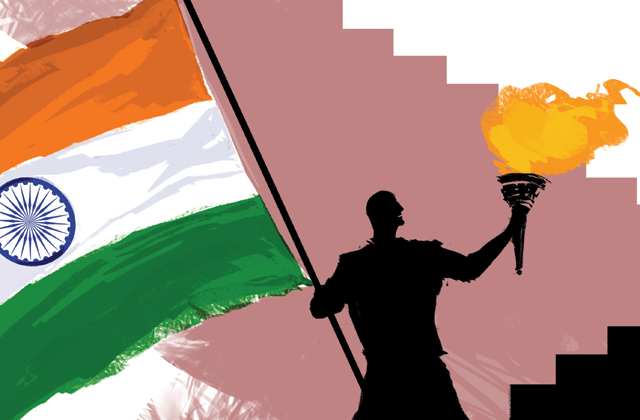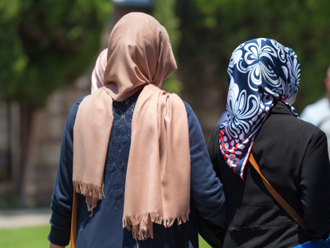
Does the anxiety on corruption, infrastructure deficits and conflicts in a part of the country arrest our sense of reality into a self-defeating pessimism? Are we missing the bigger picture? As India celebrates its 66th Independence Day, what does the report card of a country with a population bigger than Europe or the African continent read like?
In 1990, if a futures algorithm had projected India’s growth at 6.5 per cent in the year 2011 any punter would have booked it with glee. A 6.5 per cent growth still stands out in the secular global economic downturn. We are the world’s tenth biggest economy ($1.7 trillion; Dh6.24 trillion), fourth biggest in Purchasing Power Parity (PPP) terms (more than $4 trillion) and received $47 billion FDI last year. We are also crucial to the G20.
A day’s temperature cannot typify the weather. Similarly, impressive economic numbers do not convey the full India story. What has escaped notice and appreciation is the positive socio-political changes over the last 65 years.
A leading Indian television channel, in association with a popular Indian magazine and the BBC, have announced their findings for the greatest Indian since Mahatma Gandhi. The honour went to the man behind our constitution, an intellectual giant and Dalit icon, Dr Bhimrao Ramji Ambedkar.
Without dwelling on the science involved in selecting Dr Ambedkar, this acknowledgement of a Dalit sharply highlights the socio-political consolidation of the modern Indian state.
More than half of the Indian society proscribed by hereditary social backwardness and gender bias is now increasingly joining the national mainstream. A process facilitated by constitutional provisions, opportunities of economic growth ushered by the Green Revolution and further opened by the liberalisation of the economy.
Few glass ceilings
Look around, never before have so many Indian states been led by the so-called backward castes and women as chief ministers. There are few glass ceilings left. Women CEOs are no longer the exception. Girls easily outperform boys in high school exams. The body language of Indian women is changing as that of the socially marginalised.
Politically, India has never been stronger or more united. No political high office in the country is the reserve of any religion, state, caste or class. Democracy is the deity that allocates political capital. The sheer diversity of effective interest groups in the country makes coalition governments the norm, at least in the medium term. Fissiparous tendencies are at an all time low. Expectations of foes that India, with its political contradictions would implode and dismember, have remained a figment of strategic imagination.
Meanwhile, the nation is progressing from a socialist identity to market-determined inclusive growth. Landmark legislation like the Right to Education Act, the National Rural Employment Guarantee Act, and the National Food Security Bill are enablers of this inclusive growth. Unprecedented growth and economic surpluses raise questions about corruption.
It is a matter of time before new and comprehensive regulatory mechanisms address issues of fair allocation of national resources and opportunities. The Right to Information Act, Citizen Charters and E-governance will revolutionise good governance through transparency and accountability. Historically, as nations develop, corruption declines. For India, the story is not going to be any different.
India is a huge and diverse country. There are bound to be bumps. India has the ability to self correct. Our fundamentals are strong and in place. We are at a pivotal moment in our history and can become a reasonably prosperous and equitable society while establishing a legacy of harnessing diversity in a democratic order. The challenge is to keep creating structures that will allow more citizens to participate in the economic growth and safety nets when they cannot. We cannot dilute our commitment to liberalism, secularism and constitutional democracy.
In recent years, India’s narrative has been best told through the rise of our entrepreneurs and corporates. To this, one may now add our youth, our demographic dividend. My generation continued to draw on a sentimental patriotism best symbolised by Lata Mangheshkar’s Aye Mere Watan ke Logon or Mohammad Rafi’s Ab Tumhare Hawale Watan Saathiyo. Today’s youth plugs into a more upbeat nationalism from films like Lagaan, Rang de Basanti and Chak De! This globalised generation’s identification with the freedom struggle maybe weak, but their Indian identity is strong. Many also realise that wherever they may study, India is where employment and business opportunities will beckon!
I agree that when in India’s chaotic traffic or an eight-hour power outage the ‘big picture’ seems like a bureaucratic spiel. But that is what democratically developing countries have to go through. Our nation’s building process is rigorous and NRIs (Non-resident Indians) in the UAE are very much a part of it. The best years of India are yet to come, six Olympic medals is just the beginning. Jai Hind!
Sanjay Verma is the Consul General of India, Dubai









